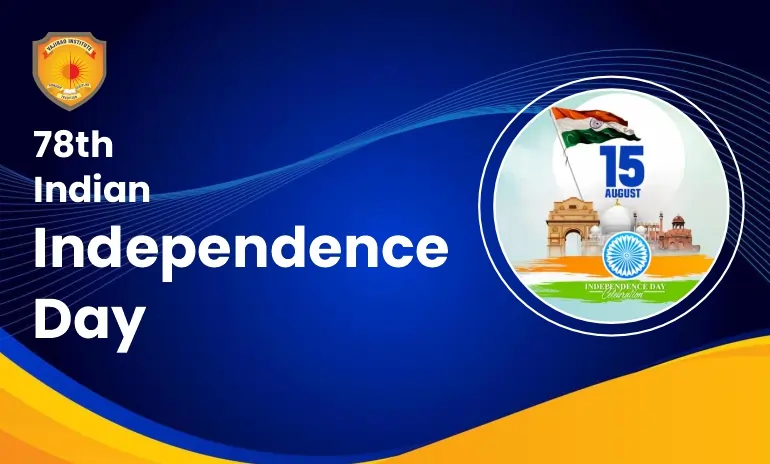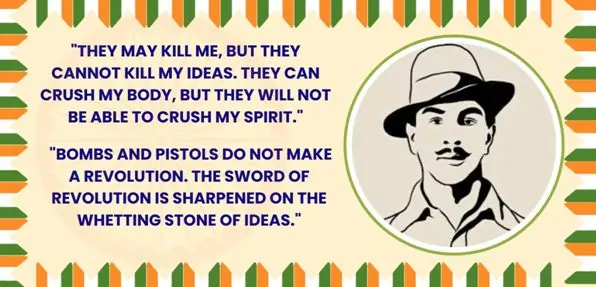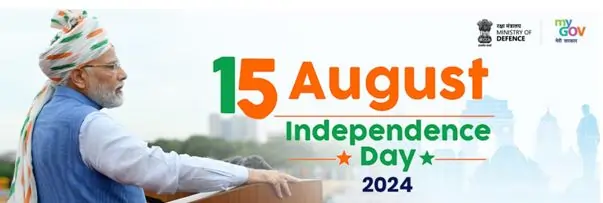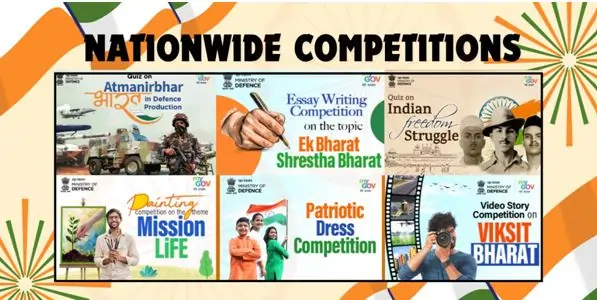India will celebrate its 78th Independence Day on August 15, 2024

Indian Independence Day :-
The great journey of freedom and unity of the human spirit
“The Independence Day”a significant event of our Nation is celebrated on the 15th of August every year, from the year 1947. Essentially, this day is not just a public holiday, but more about the nation’s heritage, the cultural tapestry and people’s fight for liberty. The struggle for independence was full of movements. This was followed by an enactment of the Indian Independence Act of 1947 by the British Parliament thus coming to the formal colonial rule and to the emergence of a new sovereign state. This day also marks the date of partition of India and Pakistan which is a sensitive and powerful event in the history of subcontinent.The day starts by the Prime Minister, saluting to the trace of the country by hoisting the flag at the Red fort in Delhi and then delivering his speech to the nation. This event is aired and people from India specifically millions of them watch the ceremony. People are engaged in flag hosting ceremonies, cultural shows, and patriotic performances in schools, colleges, and even other institutions.
Historical Background
The Early Colonial Period
The beginning of British reign in India started in 1757 after the victory of the British East India Company on the French at the Battle of Plassey. Over the course of the next century, the Company gradually drew its sphere of control over the subcontinent, profiting from the resources and people. It is a fact that Indians had a tremendous amount of unrest due to hegemonic policies accompanied by economic oppression.
Sepoy Mutiny
The First War of the Indian Independence also famously known as the 1857 War of Independence or the First Indian War of Independence was a small scale armed revolt against the British colonization of India. The Indian Uprising of 1857 or The First War of Indian Independence was a crucial uprising, which took place against the British of the British East India Company. Even though it was eventually suppressed, it was the starting point for an effectively patriotic movement. In response to this, the British monarchy put in place a direct rule of India, marking the start what is referred to as the British Raj.
Rise of Nationalism
The Indian nationalism slowly came up in the late 19th century and early part of the 20th century. In 1885 with the birth of INC or Indian national congress the first ray of political discussion and change emerged. The Lal-Bal-Pal, an acronym for Tilak, Lajpat Rai, Bipin Chandra Pal were important leaders of this time who had tremendous roles in mobilizing people especially against the British.
Gandhi and Nonviolent Resistance
The new trend to the freedom struggle was marked with the arrival of Mohandas Karamchand Gandhi from South Africa in 1915. Gandhi’s perception of civil obedience didn’t only provide inspiration to millions of Indians, but also of the global population. Preliminary movements like the Non-Cooperation Movement of 1920–22, the Civil Disobedience Movement of 1930–34 and the Quit India Movement of 1942 of India weakened the British rule.
WW-II and final Spark
WW II played a huge role in altering the British Empire. The war proved to be inconvenient for Britain any largely decreased its influence in the world. Thus, the Indian National Congress insisted on full independence, while the British administration realized that continuing to rule India was becoming more and more difficult.
After the Indian Independence Act of 1947
Thus, on July 18, 1947, the British Parliament passed the Indian Independence Act that paved way to the creation of two countries, India and Pakistan. The Act came into operation from the 15th of August 1947 that blasted the British authority. But this freedom proved a costly one, involving the severely painful separation of the sub-continent leading to massive communal riots and exchange of millions.
The Separation of India-Pakistan
The partition of India took place in year 1947 resulted in formation of two independent nations, India and Pakistan. This divide was to be mainly on the religious basis and Pakistan was to be a country for Muslims while India for the Hindus. After it, there was slaughtering of blood, massive movements of people and loss of lives. About 15 million people were affected and one million people were reported dead during the next community riots. Punjab and Bengal provinces were partitioned and thus there is increased confusion and suffering was escalated. This split has placed a long-lasting imprint on the socio-political setting of the area by having enduring hostility between India and Pakistan. Nevertheless, the division meant the liberation from British colonialism and the start of the new era for the subcontinent.
How India Celebrates its Important Day

How the Indian celebrates the Independence Day is also worth taking a look at.It celebrates the independence of India from the British rule in the year 1947. The celebrations are a combination of nationalism spirit, cultural shows, and fairs that are conducted across the country that unites people.
Flag Hoisting and Speeches
The day starts with the Prime Minister of the country unfurling the flag at the historic Red Fort in Delhi accompanied by a speech. This event is telecasted live and millions of Indians mark their presence in front of Television sets during the course of event. Large attention is paid to the achievements of the past year, the activities of the government, the fight against the occupation regime, and the honourable mention of the freedom fighters.
Parades and Cultural Programs
After the raising of the national flag is done, there is a march past where India’s military might and ethnical capital is on display. Frequently, people march to the accompaniment of school children, traditional dances are also shown, and there are parade floats representing different states and their respective cultures. Other people also join the event such as the armed forces and police who showcase discipline and the show of strength.
Community Celebrations
In different schools, colleges and other institutes, there are programmes like Flag hoisting, Cultural and Patriotism shows. Such events promote unity and nationalism because people feel a certain bond and pride in being Indian citizen. Children sing nationalist song and maps, poems, and plays from the historical records of the freedom struggle are showcased.
Illuminations and Decorations
Lamps and badges are often intensively installed outdoors; government facilities, historical landmarks, and open spaces. The colours of the Indian flag – saffron, white and dark green are also evident in almost everything that people wear, or in aspects of the social and physical environment of the country. The colours thus add a more festive feel of the movie which complements the theme of celebration.
Reflection and Patriotism
Independence Day is also symbolic of contemplation. Thus, it helps the citizens to recall the fact that many people have given their lives for the freedom of their nation. On this day, it is celebrated not only as their memory but also to ensure peoples’ adherence to justice, equality and democracy. The national anthem ‘Jana Gana Mana’ is sung with utter dedication and feelings in the heart of Indians.
78thSeventy EighthIndependence Day

The political event of the day, 15th of August, 2024 shall be marking the seventy-eight years of India’s liberation from the British rule. The key features of this year are as following:

- Theme:“Viksit Bharat”- This year exclusively the emphasis is laying only on the vision to make India as a developed nation in the year of 2047. Employment promotion entails full constructions and development in infrastructures, technologies, education and health care facilities.
- Nationwide Competitions – Competitions are conceived by Ministry of Defence jointly with MyGov and comprise of the following ones: Ministry of Defence – MyGov Quiz, Reel making contest, Patriotic dress contest, Painting and Essay. These activities are more or less aimed at the perspectives of nationalism and creativity of the citizens.
- PM’s Speech:As per tradition the Prime Minister of India Mr Narendra Modi for the eleventh time in a row will host the Indian flag at red fort and give his eleventh Independence Day speech. The goal of this speech is to promote the work done by the government, pay tribute to the advances made by the fighters and show the further goals.
- Parades – This event is expected to comprise general parades through which India’s strength in military and the nation’s asset in cultural capital will be showcased. Different units from India Armed forces, Police force, and National Cadet Corps will be there and demonstrating the pride of country and integration.
- Digital Participation –citizens can favour the celebrations on the social media platform and television stations from the comfort of their homes hence making it easier for them to be as active as is required.